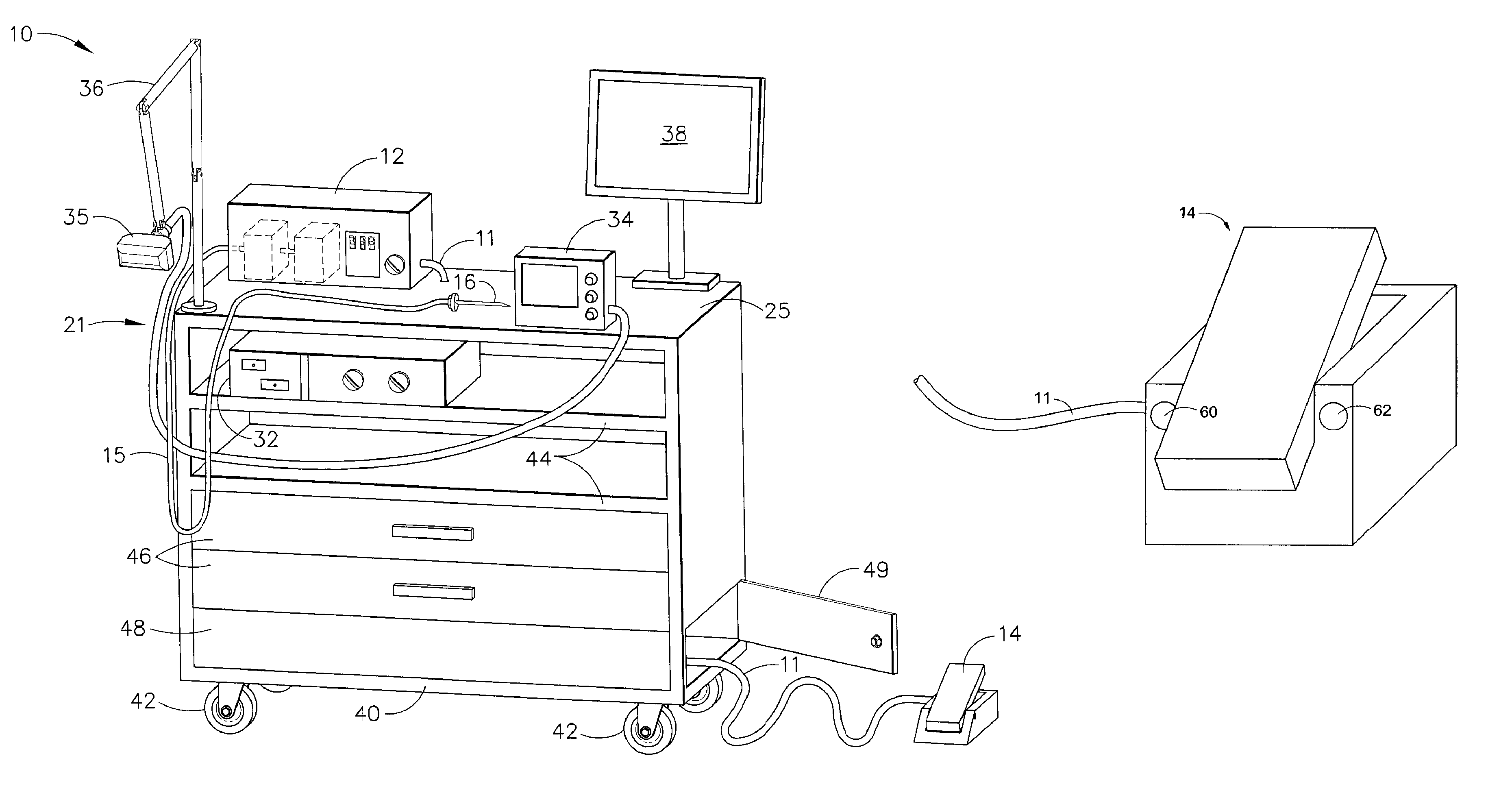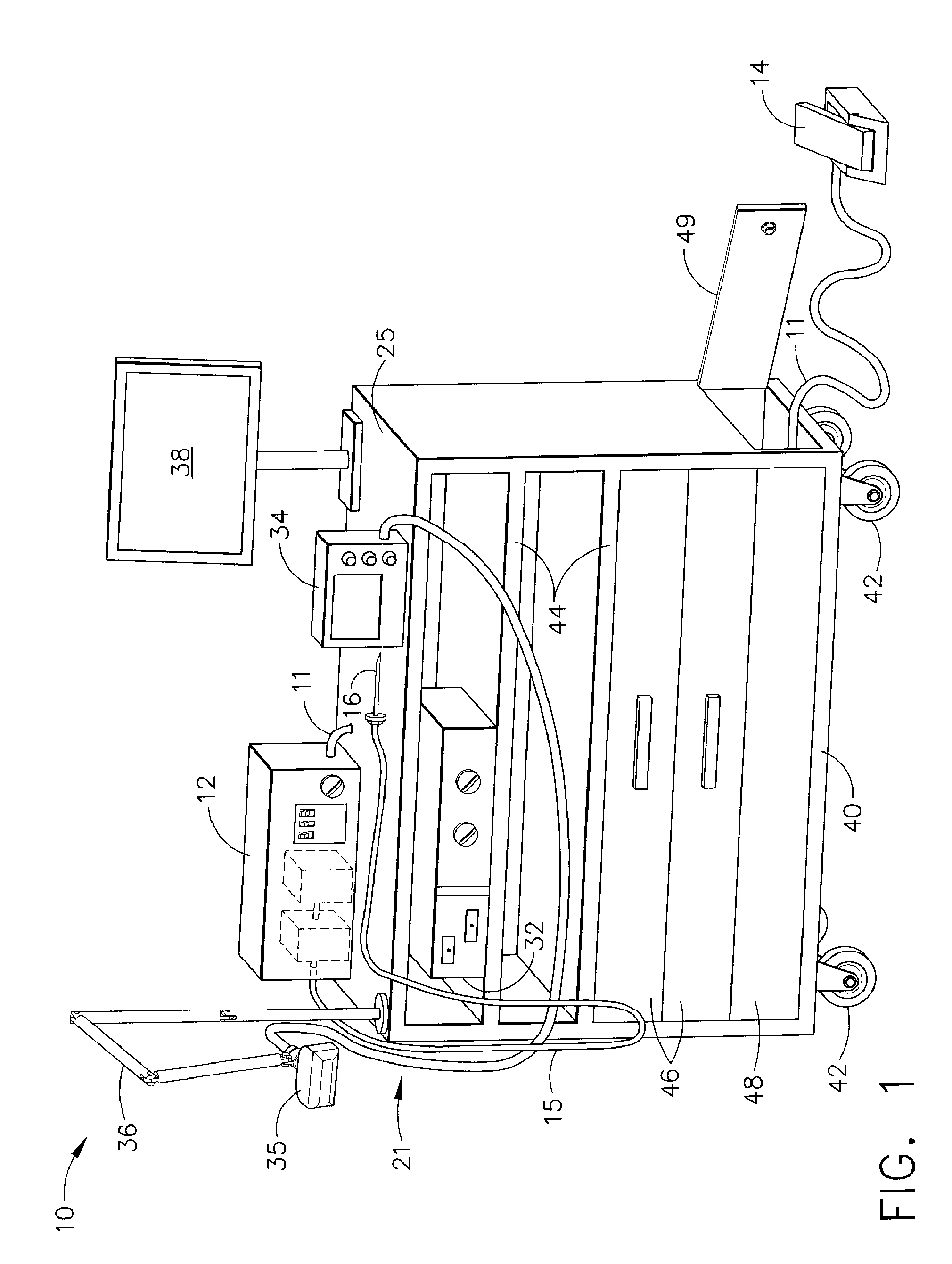Regional anesthesia system and cart
a regional anesthesia and cart technology, applied in the field of regional anesthesia systems and carts, can solve the problems of inability to perform regional anesthesia in time, time and commitment, and inability to use the “other set of hands” in the clinical practice of regional anesthesia, so as to improve the accuracy, success, and safety of regional anesthesia blocks.
- Summary
- Abstract
- Description
- Claims
- Application Information
AI Technical Summary
Benefits of technology
Problems solved by technology
Method used
Image
Examples
Embodiment Construction
[0023]The present invention provides a regional anesthesia blockade system that can be combined with a transportable cart for aiding a practitioner of regional anesthesia in the performance of a regional anesthesia block or peripheral nerve block.
[0024]As defined herein, the term “aspirate” means to remove or withdraw a liquid (e.g. a solution, blood, or medication) backwards through a needle. Aspiration creates negative pressure in the system, and when performing a regional anesthesia block aspiration is typically done by the practitioner prior to injection of local anesthetic in order to ensure that needle placement and injection is not intravascular.
[0025]The term “infuse” means to inject or introduce a liquid (e.g. a solution, blood, or medication) forward through a needle by applying positive pressure, typically for therapeutic purposes.
[0026]The term “infusion device” means an anesthetic delivery device such as an electronic infusion pump, a mechanical pump or other controller...
PUM
 Login to View More
Login to View More Abstract
Description
Claims
Application Information
 Login to View More
Login to View More - R&D
- Intellectual Property
- Life Sciences
- Materials
- Tech Scout
- Unparalleled Data Quality
- Higher Quality Content
- 60% Fewer Hallucinations
Browse by: Latest US Patents, China's latest patents, Technical Efficacy Thesaurus, Application Domain, Technology Topic, Popular Technical Reports.
© 2025 PatSnap. All rights reserved.Legal|Privacy policy|Modern Slavery Act Transparency Statement|Sitemap|About US| Contact US: help@patsnap.com



